7 Recruiting Statistics Every Small Business Needs To Know in 2022
Talent shortage. Employee’s market. The Great Reshuffle—or is it Resignation?
As a hiring manager, you’ve likely been inundated with phrases like these over the last year. And if these are the things you’re thinking about as you plan out your recruiting strategy for 2022 and beyond, we’ve got good news and bad news:
The bad news is that the current recruiting landscape is rough, but the good news is we’re here to help equip you with the knowledge you need to navigate it.
To give you the guidance you’re looking for, we’re highlighting seven recruiting statistics—from Software Advice’s own research, as well as Gartner’s—that best exemplify what the recruiting and hiring landscape looks like in 2022. Use these recruiting and hiring statistics, and the accompanying tips, to get your small business recruiting function in tip-top shape.
Stat #1: Nearly 4 million Americans have quit their job every month for the last 6 months
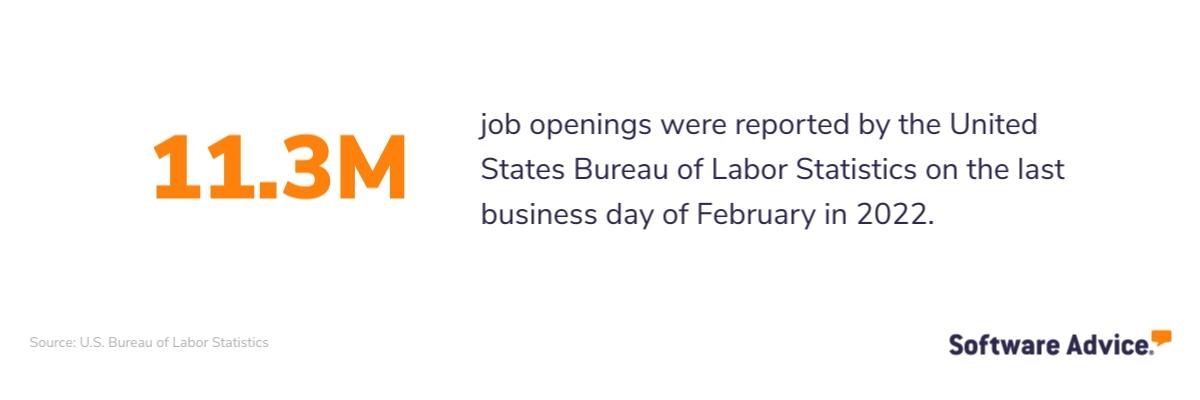
What this means for your small business:
In late 2020, nearly 30 million Baby Boomers were forced to retire. This, coupled with the fact that workers from other generations were also leaving their jobs (whether voluntarily or because they were furloughed or laid off) left a large and unanticipated gap in the skilled labor pool. And as Americans continued to leave their jobs at an alarming rate over the next year and a half, that gap transformed into the highest talent shortage the U.S. has seen in over a decade.
This means that for small businesses, the competition for talent is fiercer than ever. In order to appeal to job seekers, make sure your compensation and benefit offerings are on par with what’s standard in your industry, and if possible, provide additional perks that today’s employees value (such as flexible working arrangements).
Offer accepted? Well done. Make sure to check out our 10 Step Guide to Employee Onboarding Best Practices for tips on how to turn a new hire into a lasting employee.
Stat #2: Intent-to-leave is high for a majority of employees
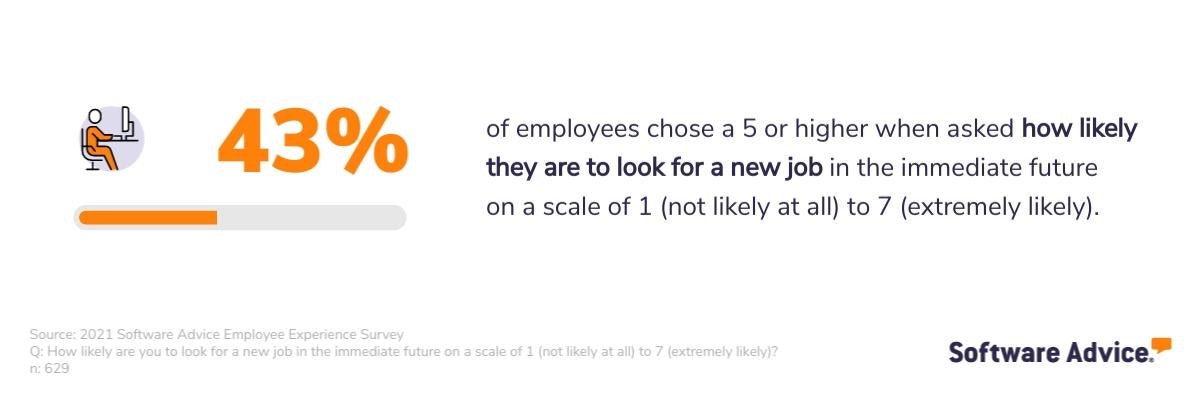
What this means for your small business:
As a result of the talent shortage, we’re now in an employee’s market. Workers know that there are an abundance of jobs available, so they don’t have to settle for a position they’re not satisfied with.
Small businesses should seek to measure their own employees’ intent-to-leave. Intent-to-leave is a useful HR metric to track for two main reasons: 1) It helps alert you to issues within your company culture or employee experience that are driving workers to leave, and 2) when caught early, you can take the actions necessary to reduce turnover, helping alleviate some of your recruiting team’s workload.
Browse our survey tool directory to get an idea of the different types of platforms that can be used to assess your employees’ job satisfaction and intent-to-stay. Then check out TINYpulse’s list of survey questions to predict turnover for examples of appropriate questions you can ask your workers.
Stat #3: Recruiters have more active job openings than usual
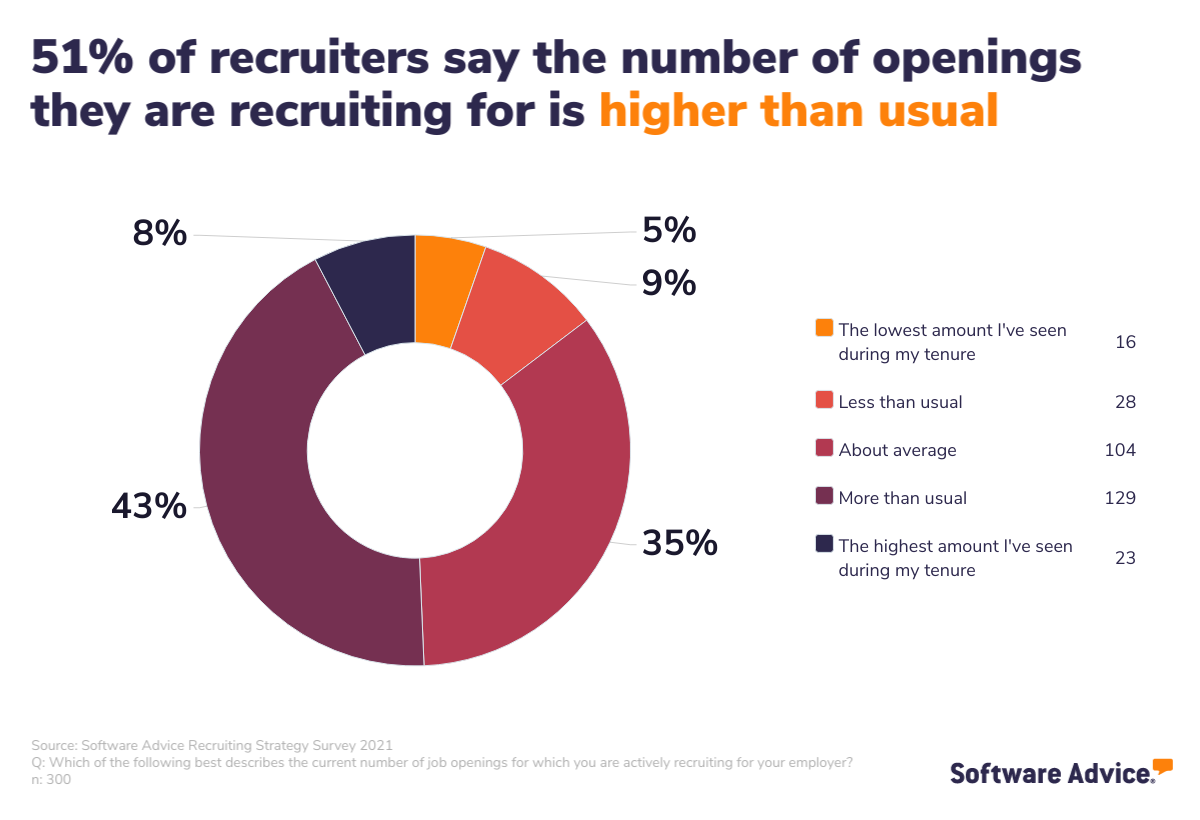
What this means for your small business:
Considering the general abundance of open jobs in the U.S., it’s no surprise that recruiters currently have a lot on their plates. And unfortunately, hiring an additional recruiter won’t lighten the load, because there’s a shortage of HR professionals too; for instance, Gartner revealed that there was a 146% increase in job openings for recruiters between January 2020 and August 2021 (full source available to clients).
So what is the answer for small businesses who are understaffed and facing a surplus of job openings? In “To Solve the Recruiting Crisis, Make Hiring a Team Sport,” Gartner shares four tips for hiring managers dealing with just this sort of situation:
Prioritize roles that have the biggest impact on business continuity
Instead of waiting for them to come to you, seek out and engage candidates
Hire based on potential, not credentials
Streamline your screening and interview process to accelerate hiring decisions
Stat #4: It’s taking longer than usual for recruiters to fill openings
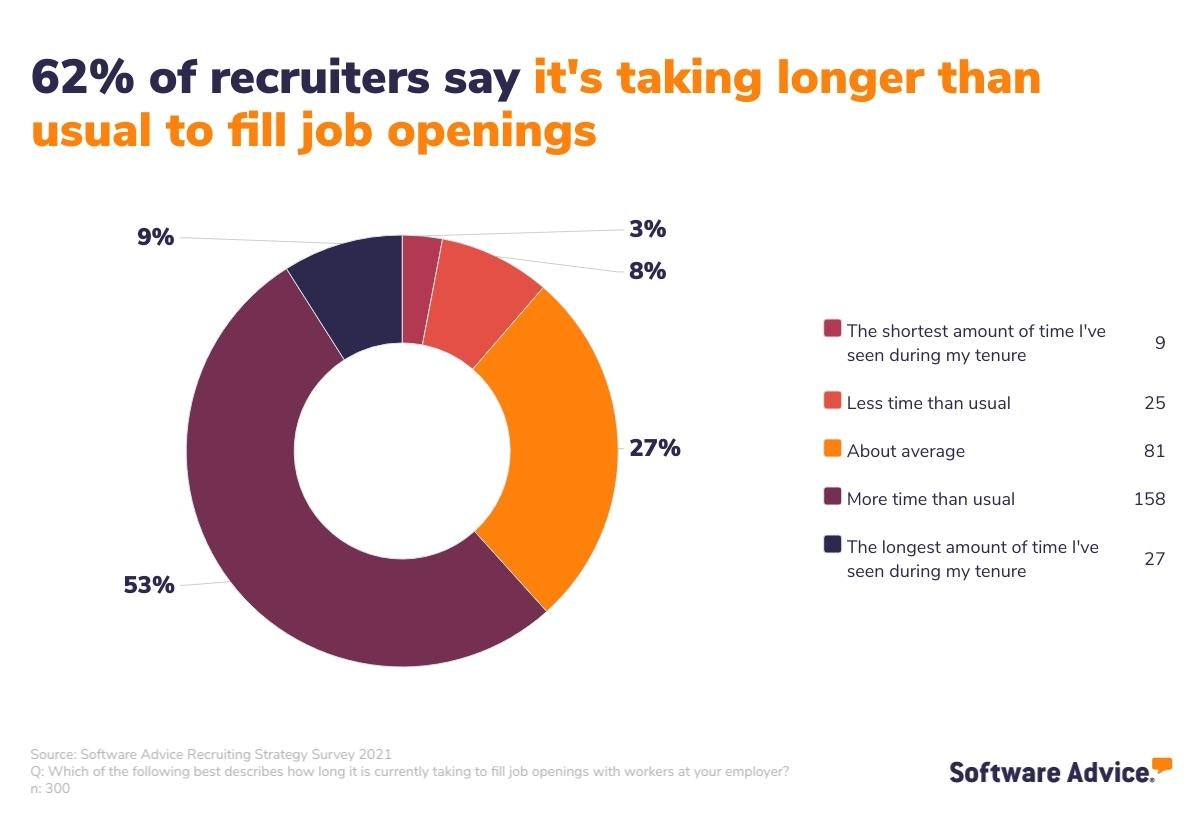
What this means for your small business:
With more active job openings for recruiters to manage and a tight competition for talent, it’s taking longer than usual for recruiters to fill roles. In fact, our Recruiting Strategy Survey* found that 56% of employees with recruiting responsibilities fear there are positions they’ll never be able to fill.
As the saying goes, time is money, and the longer it takes for a small business to fill a role (or multiple roles), the harder the hit to their bottom line. Following the four tips from Gartner we listed in the section above can help, and in particular, streamlining parts of your hiring process through automation will improve your time-to-fill.
More than half (52%) of the recruiters we surveyed said that they are planning to purchase or already have an applicant tracking system. Applicant tracking systems (ATS) can improve your time-to-fill by automating tedious tasks such as posting openings to job boards, screening resumes, scheduling interviews, and even scoring and ranking candidates.
Click here to explore Software Advice’s 2022 Applicant Tracking System FrontRunners.
Stat #5: A lack of qualified candidates and resources coupled with ever-changing roles are hindering recruiting efforts
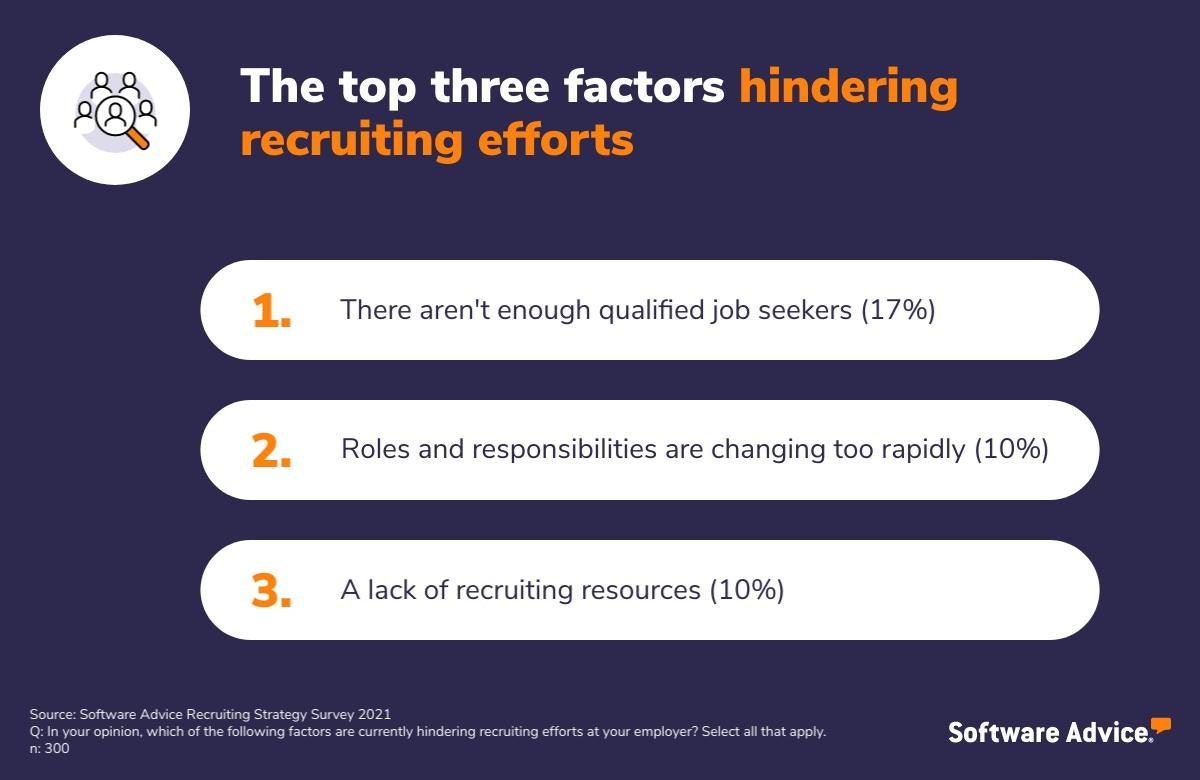
What this means for your small business:
While these results are useful for broader conversations about the current state of recruiting, it is important to ask your recruiting team what they feel are the biggest challenges in their way. Every organization is different—for example, some teams may have an overly complex recruitment process due to having too many recruiting tools and resources at their disposal resulting in a slow screening and interviewing process, and ultimately, a negative candidate experience.
With that said, though, if you find the factors listed above are affecting your business’s talent acquisition efficacy, there are two things you should do:
First, consider whether you can extend your search for talent to freelance and contingent workers. This would allow you to greatly expand your potential talent pool and meet quickly changing skill needs in a pinch.
Second, evaluate your need for additional resources. What systems do you currently have in place, and where are they falling short? Make time to meet with your recruiters in order to answer these questions, then use the knowledge that comes out of those conversations to decide what kind of additional HR tools (such as a job posting platform or social recruiting software) would benefit your organization’s human resources function the most.
Stat #6: Compensation, job security, and work-life balance have the biggest impact on employees’ job satisfaction
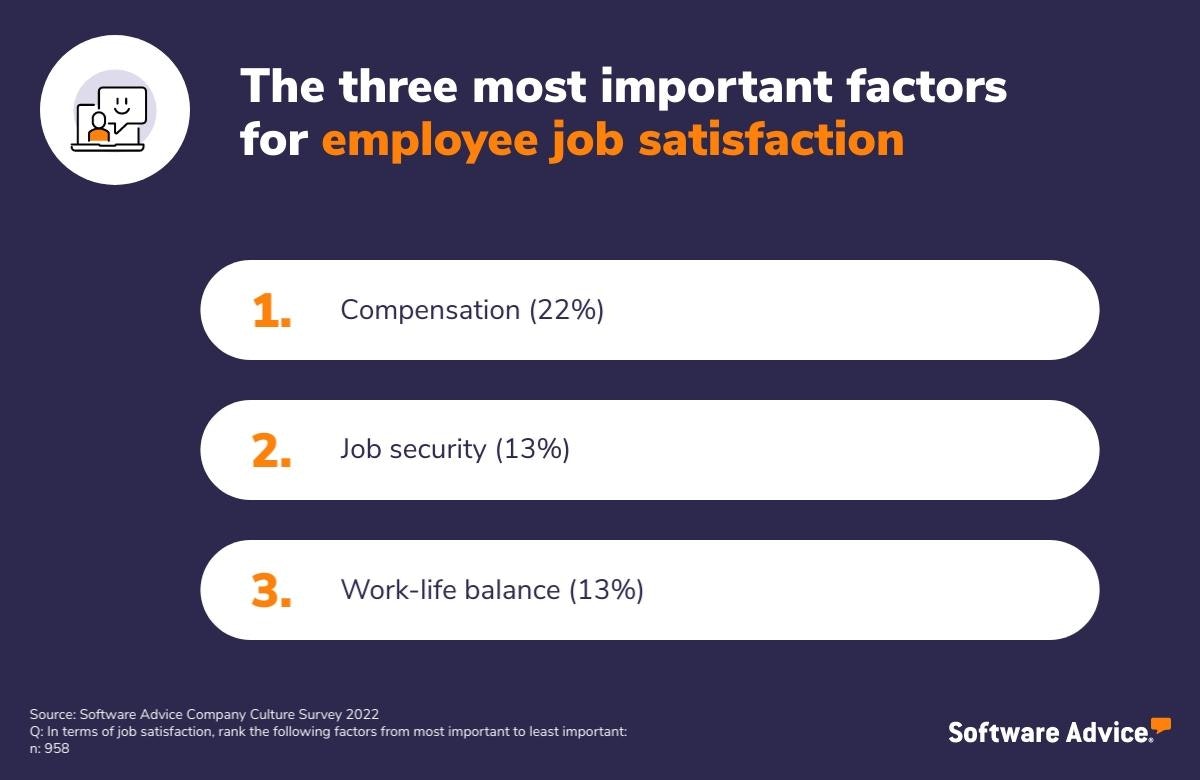
What this means for your small business:
This is actually great news for small businesses, because it means that instead of trying to compete for talent through providing fancy perks that are typically associated with larger corporations, SMBs can focus on excelling at the basics: offering competitive compensation and a healthy work culture.
Before extending a job offer to a qualified candidate, do some research to find out whether the salary range you’ve set for the role is in line with what’s standard for your industry and region today. You can use employer review sites, such as Glassdoor, to see compensation information for similar positions at businesses like yours.
As for work-life balance, there are a few things to consider: Does your company’s paid time off (PTO) policy need to be updated to allow for more days off? Can you offer parental leave if you don’t already? Is remote work a possibility for your workers?
These are the types of policies that give employees better balance between their personal and professional lives, and offering them will not only help your talent acquisition efforts, but improve your employees’ engagement level as well.
Stat #7: HR teams are planning to upgrade their tech stacks
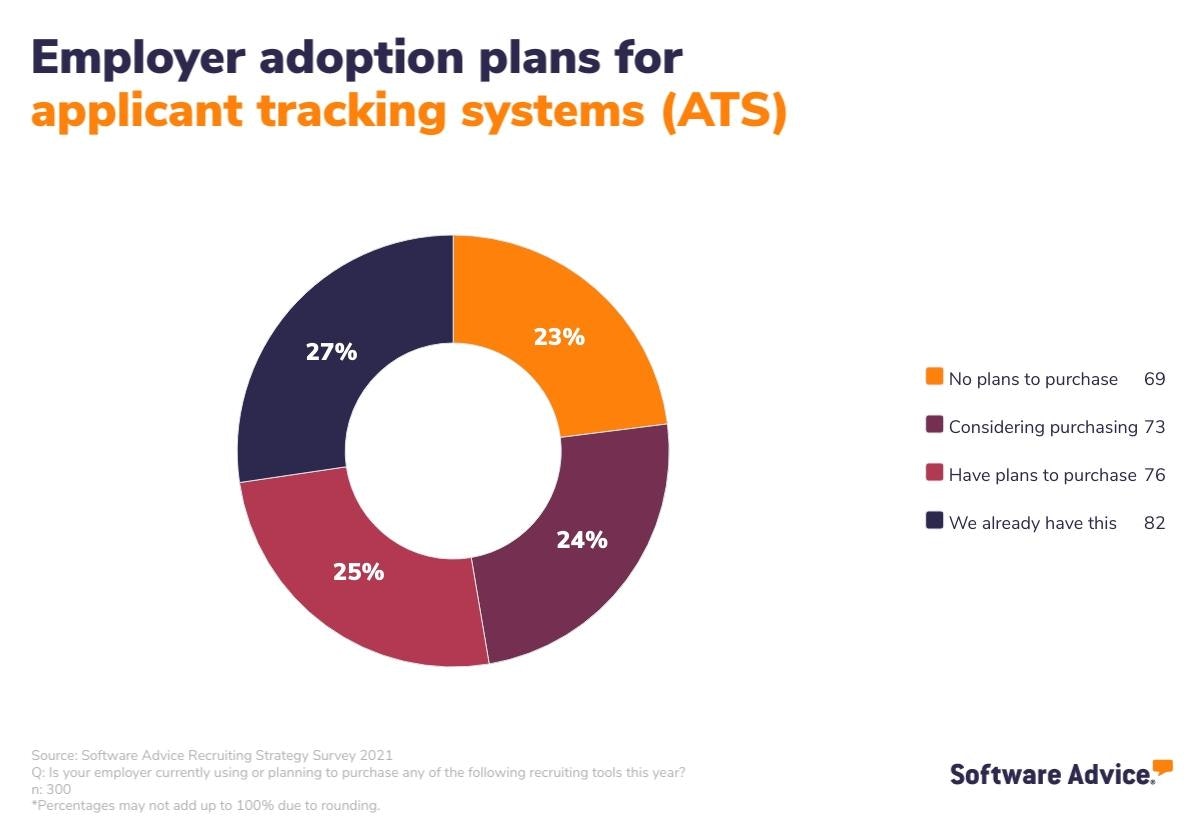
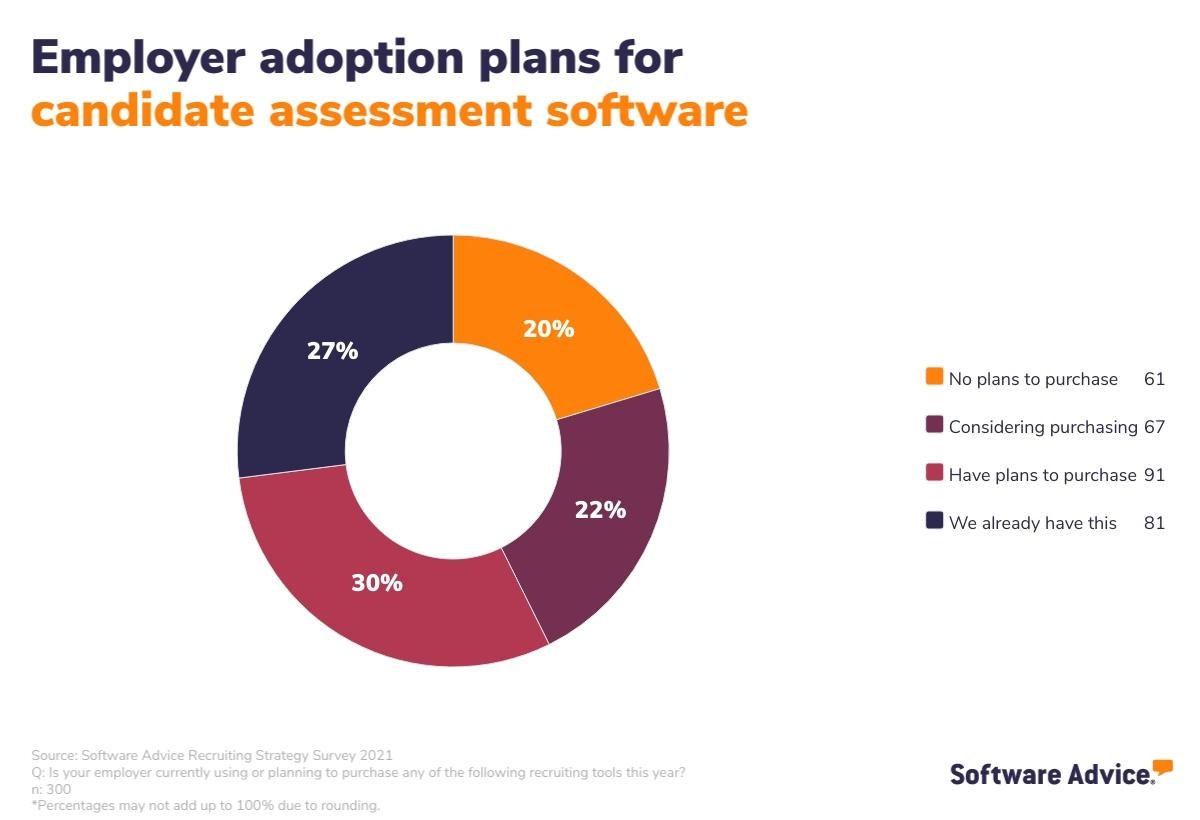

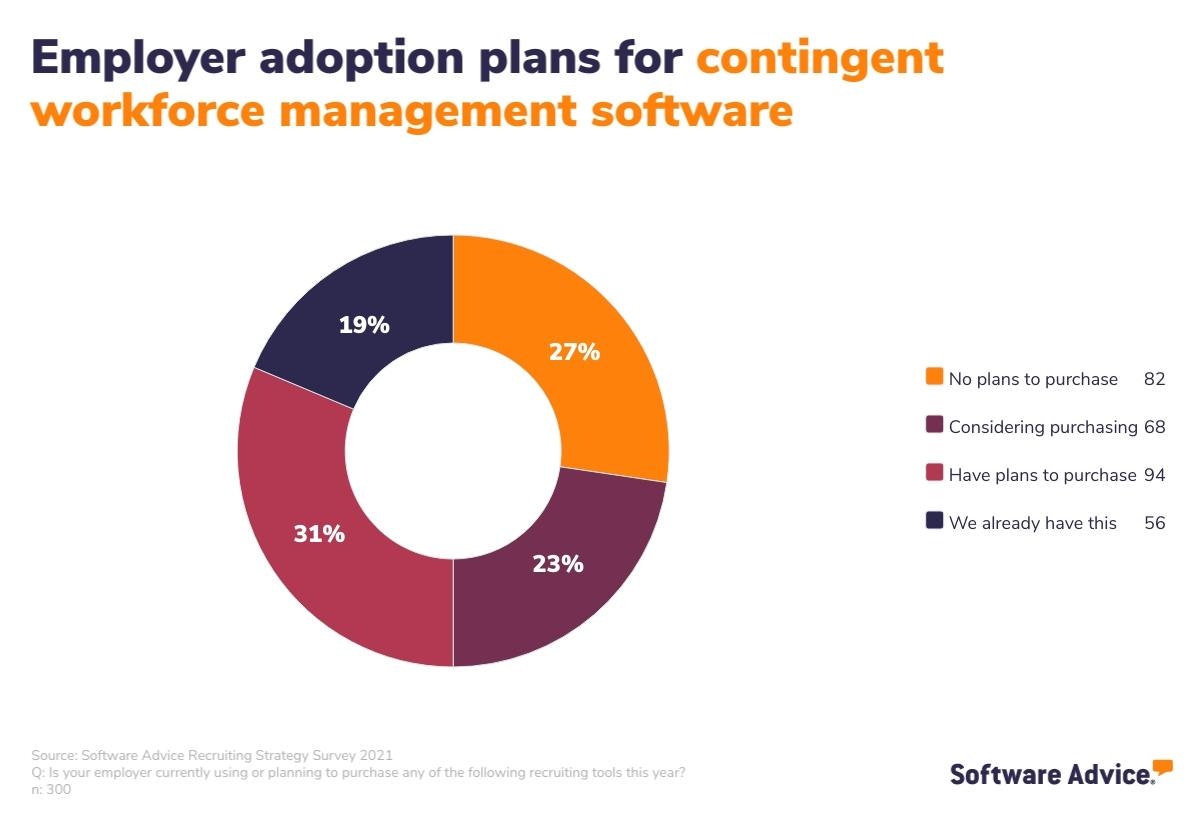
What this means for your small business:
This statistic tells us that if you haven’t digitized your recruitment process, you’re falling behind. And while you don’t need to shell out for each of the specialized tools listed in the pie charts above, it is a good idea to assess how effective your current human resource software is.
Today’s HR tools don’t just run payroll and ensure you’re meeting compliance requirements—they help you find and engage with potential candidates, kick off professional development programs, and track your own recruitment statistics, keeping you focused on what matters the most: building a productive, effective workforce.
So, are you ready for a recruiting software upgrade?
In 2022, the small businesses that marry best practices with the right technology are set to own recruiting in their space. The recruiting stats above will give you a jumping-off point to get your recruiting efforts to the next level.
As for the technology bit, we can help with that too. Head to our recruiting software page to compare top options, read reviews, and filter products based on your needs and budget. If you need additional guidance, schedule a call with one of our recruiting software advisors to get personalized software recommendations in minutes.
Methodologies
* The Software Advice Recruiting Strategy Survey was conducted in July 2021. We collected 300 responses from workers with recruiting responsibilities at U.S. employers. The goal of this survey was to learn how much companies are struggling with recruiting and hiring, and what solutions they’ve considered to improve recruiting and hiring outcomes.
** The Software Advice Company Culture Survey was conducted in January 2022. We polled 958 employees to learn more about the shift to hybrid and remote work models impacts company culture, job satisfaction, turnover, and toxic behaviors in the workplace. Respondents were screened to confirm that they were employed full- or part-time at a company with between six or more employees.